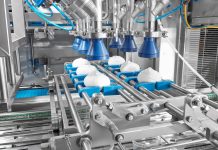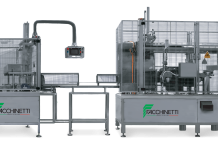In Italy food consumption decreases to the levels of 20 years ago, Italian dairy sector escapes by improving export. Through critical issues and opportunities Giuseppe Ambrosi president at Assolatte outlines today’s reference point.
With a realistic analysis of the current situation, very obligingly dr. Giuseppe Ambrosi, president at Assolatte, offers his vision of the sector’s problems and opportunities.
Dr. Giuseppe Ambrosi, let’s start from the socio-economic framework which we are going through…
Because of the overall crisis that affected our country, we ended 2012 with another reduction of GDP (-2.3%). Considering the last 5 years, GDP lost more than 7% totally. The decrease is due to the slowdown of the industrial production (-6.4%), which in 2012 did not spare even our sector, historically anti-cyclical (1.7%). This production decline has caused the closure of thousands of businesses (70,000 in 5 years), it has adversely affected employment levels (at the end of 2012, Italy has counted nearly one and a half million jobs), and therefore also income of families, their spending and – certainly not least – common equanimity and trust in the future. If confidence drops, consumption drops, too-even that of food, back to the level of 20 years ago – in a dangerous vicious circle that feeds the crisis and distances the exit from the tunnel.
High hopes of Italian milk production are placed in export, how did it go last year?
In 2012 we exceeded 300,000 tons of exported cheese, nearly two billion Euros in value, with a record growth both in volume (7%) and in value (3.5%), thus confirming a positive balance of trade for dairy products for the third consecutive year.

These important figures were achieved with difficulty, were based on our own strength only, thanks to the quality and reputation of our productions, appreciated in a growing number of countries. Today we export worldwide and the growth rates achieved in new destinations are relevant. Think, for instance, about the results obtained in Asian countries where, from 2000 to today, we have nearly quintupled export values, or about those in Africa, where our exports have grown by 700% in little more than a decade. Unfortunately, export success is a cold comfort; firstly because it does not relate to all sectors of our industry and secondly because the internal market absorbs more than 70% of our productions.
Positive notes so far. Probably there are also areas to be improved, aren’t there?
There are a lot of gaps to be filled, which prevent economic recovery and our businesses to express their great potential. Let’s analyze them together. 1) The price of money. Obtaining credit is difficult and when you do, it costs 50% more than in Germany or France. 2) The burden of IR. Years of broken promises! According to the World Bank Italy is the tail-end of Europe, with a tax burden that has now reached 68% corporate profits. 3) Energy price increase. A thirty- year demagogic policy forces us to pay energy at far greater costs than our competitors. 4) Quality of infrastructures. We are seriously delayed! Demagogy and populism are reigning and Nimby syndrome (not in my back yard) prevents building infrastructures desperately needed by companies in order to be more efficient. 5) Low output. While others see their output grow at annual rates ranging between 1 and 2.5%, Italy continues creaking, both on an industrial and agricultural level. 6) Difficulties in internationalization. As we have seen, the export growth data are positive, but they depend solely on our entrepreneurial skills. Unfortunately, our shipping costs are among the most expensive in the world and bureaucracy extremely confused. Specifically concerning milk industry, what and where are the critical points to be cleared? Daily we are forced to deal with specific problems that nobody really wants to deepen, address, solve. I am referring to the ancient problem of milk cost, our raw material for excellence that has always been among the highest in the world. With the same quality. The price is the highest ever, but it seems sufficient to ensure an adequate income for milk producers because of their production costs. I am well aware of dealing with a sensitive subject, and what I say will give rise to controversies. But I wonder why, over many years, nobody has ever accepted our proposal to work together in order to analyze the causes of these costs, remove inefficiencies, become more competitive. I am also referring to industry legislation, which bridles businesses and fools consumers.
In confidence, are the others the only responsible?
We cannot hide behind the phrase “things aren’t going well for us”. We, entrepreneurs, have made mistakes too, and it is not fair not to face our responsibilities. Our entrepreneurial culture led us to operate by ourselves, while we were supposed to feel part of a system. Engaged in more and more strenuous daily management, we have allowed demagogy to be overpowering. We have accepted many compromises and we postponed many troubles till tomorrow. But tomorrow has arrived, it’s today! Now we must work together to get out of this long tunnel.
President Ambrosi, which your final message?
I’ll end by borrowing the words by Samuel Beckett, great Irish author; words that I hope will guide the Italian milk supply chain components, through the difficult moments of our lives, both human and entrepreneurial: “There is no night so deep, that it may not be pierced in the end”. The sun always rises!




